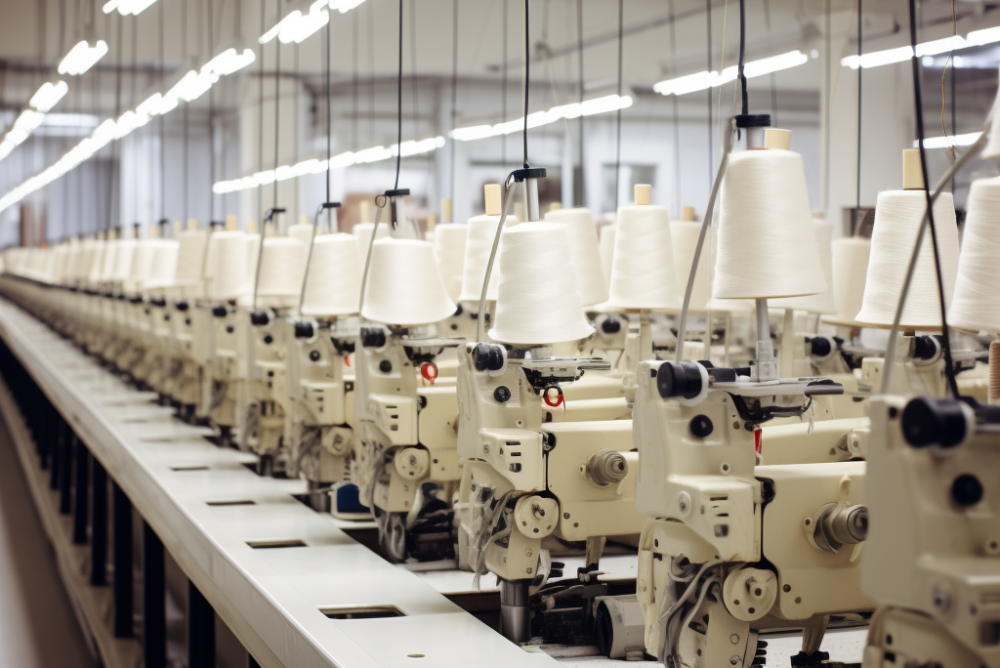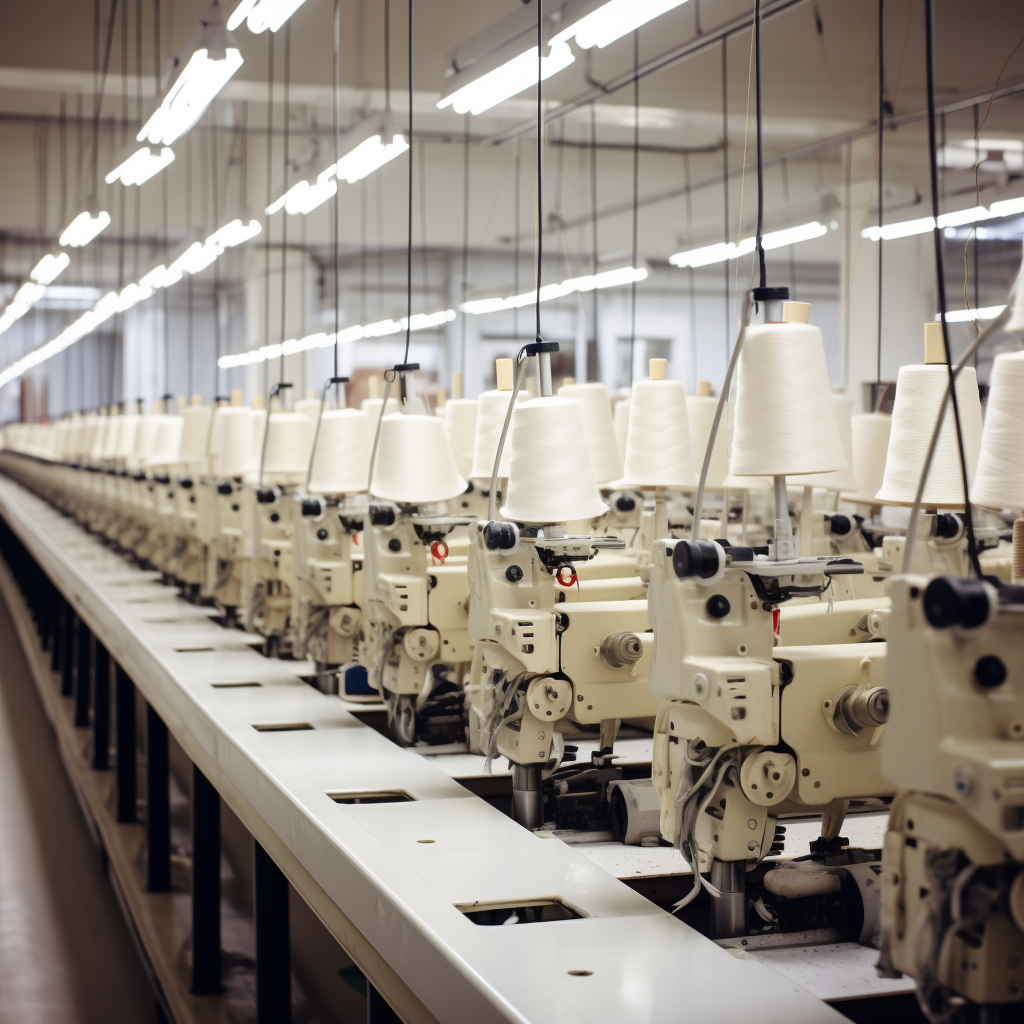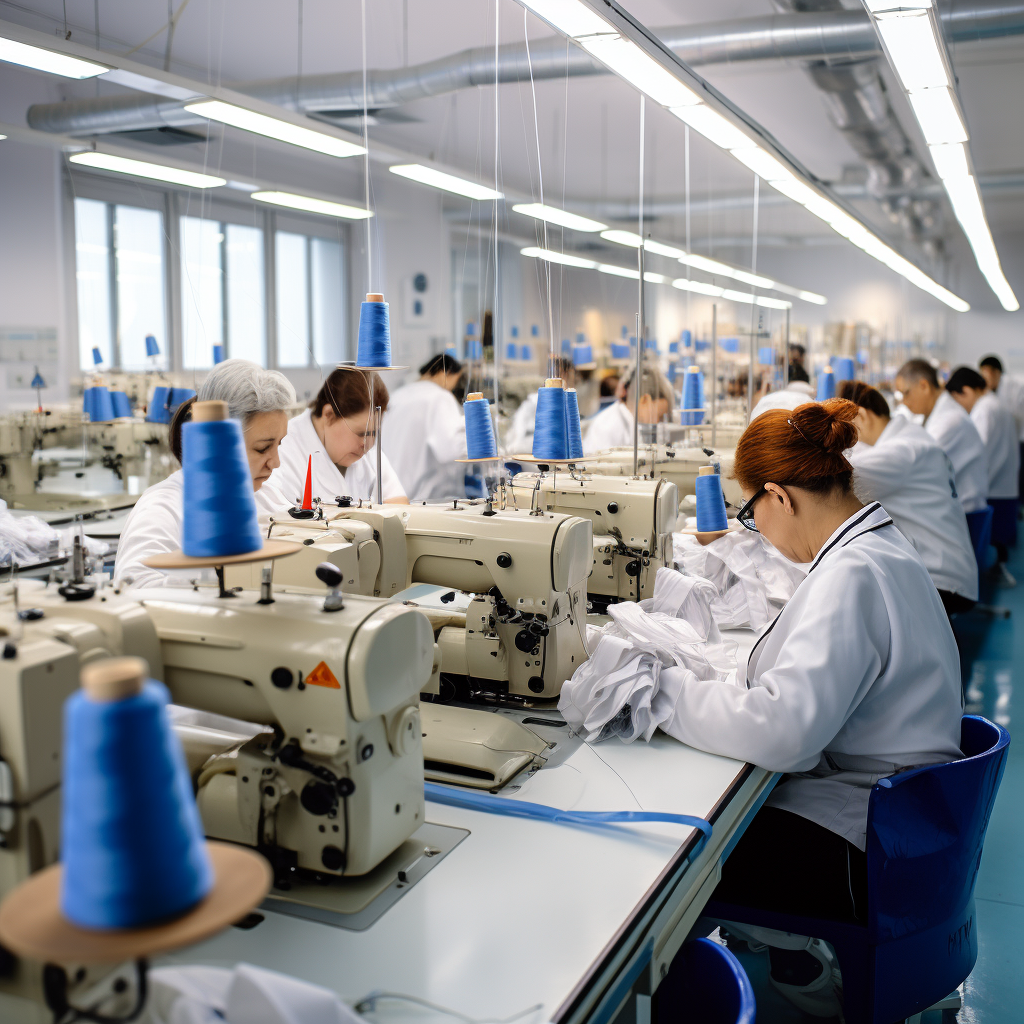Optimizing Sewing Line Productivity: The Work Study Method Explored


The clothing manufacturing industry is a vast and dynamic sector, responsible for producing garments that serve not just as a basic human necessity but also as an expression of personal style and cultural identity. As with any large-scale manufacturing process, productivity is a key determinant of success, both in terms of cost efficiency and the ability to meet demand in a timely manner.
In the heart of the clothing manufacturing process lies the sewing line – a critical stage where individual pieces of fabric are transformed into wearable garments. It's no exaggeration to say that the productivity of the sewing line can make or break a clothing manufacturer's profitability.
The Work Study Method, a combination of time study and motion study, has long been applied in various industries to enhance productivity. By examining and streamlining both the physical movements of workers and the time taken for each task, it’s possible to uncover inefficiencies and devise improved methods of operation. In the context of the sewing line in clothing manufacturing, the implications of these improvements can be profound.
This article delves deep into the clothing manufacturers industry, with a keen focus on improving sewing line productivity through the Work Study Method. By incorporating real data, case studies, and user-centric insights, we'll illuminate the potential for transformative change in this vital industry sector.
The Current State of the Clothing Manufacturers Industry
The clothing manufacturers industry is one of the most versatile and expansive sectors in the global market. With an estimated worth of over $1.78 trillion USD in 2021, the industry has been a significant contributor to the global economy. Demand is driven by both essential needs and ever-changing fashion trends, making it both resilient and volatile.
However, with the rise of fast fashion, sustainability concerns, and increased competition, there are mounting pressures on manufacturers. The emphasis on producing more in less time has never been more pronounced. As a result, there's a consistent demand for methods that can improve the efficiency and productivity of manufacturing processes.
Key Facts and Figures:
- The global apparel market is projected to grow at a compound annual growth rate (CAGR) of 4.5% from 2022 to 2027.
- Approximately 75 million people are employed in the clothing manufacturing industry worldwide.
- The average sewing line consists of anywhere between 20 to 50 workers, depending on the scale and nature of production.
- Delays in the sewing line can result in significant cascading effects, leading to missed deadlines and increased costs.
What is the Work Study Method?
The Work Study Method is a systematic approach to improving the efficiency of work processes. It's rooted in the principles of industrial engineering and revolves around the analysis of work to achieve maximum output for minimum input, without reducing the quality of the product.
This method is composed of two primary studies:
- Time Study: It involves measuring the time required to complete a task under present conditions to establish a standard time. By recording and analyzing the time taken for each sub-task, inefficiencies can be identified and rectified.
- Motion Study: A detailed observation and analysis of the movements made by workers while performing a task. By eliminating unnecessary motions and simplifying required ones, work can be made more efficient.
Both studies are integral to the Work Study Method, and when applied together, they can lead to significant improvements in efficiency and productivity.
Importance of Productivity in the Sewing Line
In the realm of clothing manufacturing, the sewing line is pivotal. It's where individual fabric pieces become cohesive garments. Therefore, the efficiency of the sewing line directly impacts the overall production rate.
Factors Influencing Sewing Line Productivity:
- Skill Level of Workers: A skilled workforce can maintain consistent quality while working at an efficient pace.
- Machine Efficiency: Regular maintenance and updates ensure that sewing machines run optimally.
- Workflow Design: A well-organized and logical flow of work reduces delays and bottlenecks.
- Quality of Raw Materials: The quality of fabric and other materials can influence the ease of sewing and the number of defects.
- Work Environment: Proper lighting, ergonomically designed workstations, and a comfortable environment can enhance worker productivity.
Enhancing productivity in the sewing line not only reduces production costs but also enables manufacturers to meet market demands more effectively. In a competitive landscape, this ability can be a significant differentiator.

Application of Work Study Method to Improve Sewing Line Productivity
Enhancing productivity in the sewing line using the Work Study Method involves a detailed analysis and then the strategic implementation of findings. Here's how this method can be tailored to the unique requirements of a sewing line:
5.1. Motion Study
Objective: To minimize wasteful movements, ensuring each motion adds value to the process.
Steps:
- Observation: Record videos of workers as they perform tasks. This offers a chance to review and analyze the detailed movements of hands, fingers, and even feet.
- Classification: Categorize motions into 'necessary' and 'unnecessary.' For instance, repeated adjustments of fabric or searching for tools are usually indications of inefficiency.
- Redesign: Once unnecessary motions are identified, devise ways to eliminate or reduce them. This could involve reorganizing the workstation, providing specialized tools, or training workers on efficient techniques.
- Implementation: Introduce the redesigned process to the workforce, ensuring they understand the reasons behind the changes and the benefits they offer.
5.2. Time Study
Objective: To establish a standard time for tasks, ensuring consistency and effective scheduling.
Steps:
- Selection: Choose representative tasks or operations for study. Ideally, these should be recurring tasks that significantly impact overall productivity.
- Measurement: Using a stopwatch or digital tools, measure the time taken for each task multiple times to get an average.
- Analysis: Examine the recorded times, identifying instances where there were significant deviations from the average.
- Standardization: Set a reasonable and achievable standard time for each task, considering allowances for fatigue and unavoidable delays.
5.3. Method Study
Objective: To establish the most efficient method of performing tasks.
Steps:
- Record: Document the current method of operation, using flowcharts or process maps.
- Examine: Scrutinize the existing method, identifying potential inefficiencies or bottlenecks.
- Develop: Propose new methods that might be more efficient, drawing on findings from the motion and time studies.
- Implement: Once a more efficient method is identified, put it into practice. This might require training or the introduction of new tools.
By meticulously applying the principles of the Work Study Method to the sewing line, manufacturers can achieve tangible improvements in productivity. Such enhancements not only contribute to the bottom line but also bolster a manufacturer's reputation for timely delivery and consistent quality.
Real-world Case Studies Demonstrating the Impact of the Work Study Method
Across the globe, numerous clothing manufacturers have recognized the potential of the Work Study Method and successfully integrated it into their operations. Here are some compelling case studies:
6.1. Apparel Manufacturer in Southeast Asia
- Challenge: This mid-sized manufacturer was facing delays in order delivery, leading to contractual penalties and a tarnished reputation.
- Solution: They employed the Work Study Method, focusing on motion study. The analysis revealed that workers were spending a significant amount of time retrieving tools and materials.
- Outcome: By redesigning workstations with essential tools within arm's reach and ensuring continuous material supply, they achieved a 25% increase in sewing line productivity. This not only eliminated delivery delays but also reduced production costs.
6.2. European Luxury Brand In-house Production
- Challenge: The brand, known for its intricate designs, was struggling with consistency in product quality.
- Solution: A detailed time study was conducted. It was discovered that the varied time taken by different workers for similar tasks was causing inconsistencies.
- Outcome: By standardizing task times and offering training to slower workers, the brand achieved a more consistent product output, ensuring the high quality they were known for.
6.3. Large-scale Manufacturer in South America
- Challenge: Facing stiff competition from cheaper markets, this manufacturer needed to enhance productivity without compromising on wages or worker conditions.
- Solution: The method study was applied extensively. The entire sewing line process was mapped, and bottlenecks were identified.
- Outcome: By rearranging certain processes and introducing new, more efficient sewing methods, they realized a 15% boost in productivity, allowing them to remain competitive without resorting to cost-cutting measures harmful to workers.
These real-world examples underscore the tangible benefits of the Work Study Method. When applied diligently, it can address a range of challenges faced by clothing manufacturers, ensuring both profitability and a commitment to quality.

Challenges and Limitations of Implementing the Work Study Method
While the Work Study Method has proven its worth in numerous applications, its introduction and sustained use in the sewing line of the clothing manufacturing industry aren't without challenges. Understanding these challenges is essential for any company wishing to employ the methodology effectively.
7.1. Resistance to Change
- Issue: Humans are creatures of habit. Workers, especially those accustomed to a particular way of working, might resist changes proposed based on work study findings.
Solution: Transparent communication about the reasons for changes, coupled with training sessions and workshops, can ease this transition. Showing workers tangible - benefits, such as potential for higher earnings or easier work methods, can also foster acceptance.
7.2. Initial Cost and Time Investment
- Issue: Conducting motion and time studies, analyzing data, and implementing changes require both time and monetary investments.
- Solution: Viewing this as a long-term investment is crucial. While there are upfront costs, the return on investment in terms of increased productivity and reduced inefficiencies often justifies the initial outlay.
7.3. Maintaining Updated Standards
- Issue: Once time standards are set, there might be a tendency to view them as static. However, as methods improve and technology advances, these standards might become outdated.
- Solution: Regularly reviewing and updating standards ensures that they remain relevant and effective. Annual or biennial reviews can be beneficial.
7.4. Overemphasis on Speed
- Issue: A potential pitfall of time studies is pushing workers to prioritize speed over quality.
- Solution: Balancing productivity targets with quality checks is essential. It's crucial to communicate to workers that while efficiency is valued, it should never come at the expense of product quality.
7.5. Data Interpretation
- Issue: The data derived from motion and time studies need skilled interpretation. Incorrect analysis can lead to misguided changes.
- Solution: Employing or consulting with experts in the field of work study can ensure that data is interpreted correctly, leading to informed decisions.
Recognizing these challenges and proactively addressing them is key to harnessing the full potential of the Work Study Method in the clothing manufacturing industry. Being prepared ensures that manufacturers can navigate potential pitfalls and reap the substantial benefits the methodology offers.
Conclusion
The clothing manufacturing industry, with its vast scale and inherent complexities, requires consistent introspection and evolution. The Work Study Method, a time-tested approach rooted in industrial engineering principles, offers a pathway to significant productivity enhancements, especially in the crucial sewing line phase.
By understanding and judiciously applying the method, while being mindful of its challenges, clothing manufacturers can position themselves for sustained success in a competitive and ever-evolving market landscape.
Frequently Asked Questions (FAQs) about Improving Sewing Line Productivity Using the Work Study Method
What is the Work Study Method in the context of clothing manufacturing?
The Work Study Method is a systematic technique used to analyze and enhance work processes in the clothing manufacturing sector. By assessing time and motion within the sewing line, it aims to increase output without compromising quality.
How can the Work Study Method benefit my clothing manufacturing business?
Implementing the Work Study Method can lead to improved sewing line productivity, reduced wastage, consistent product quality, timely deliveries, and cost savings. This can boost profitability and enhance your brand's reputation in the market.
Is the implementation of the Work Study Method expensive?
While there's an initial investment in terms of time and resources, the long-term returns in efficiency, reduced wastage, and increased productivity often justify the costs. Consider it a strategic investment in your business's future.
How does the Work Study Method ensure product quality isn't compromised for speed?
The method isn't solely about increasing speed; it's about optimizing processes. By eliminating unnecessary motions and setting reasonable time standards, it ensures tasks are performed efficiently without rushing, thereby maintaining quality.
Can I implement the Work Study Method in a small-scale sewing setup?
Absolutely. The Work Study Method is scalable and can be tailored to fit both large-scale factories and smaller sewing setups. The principles of efficiency and productivity are universal and can benefit operations of any size.
Are there any challenges to be aware of when implementing the Work Study Method?
Yes, challenges can include resistance to change from employees, initial cost and time investments, and the need for periodic updates to maintain relevance. However, with proactive management and clear communication, these challenges can be navigated successfully.
How often should I review and update the standards set by the Work Study Method?
It's advisable to review standards annually or biennially. This ensures they remain relevant and reflect any advancements in technology or shifts in best practices.





-500x500.jpg)
-500x500.jpg)
-500x500.jpg)
-500x500.jpg)
-500x500.jpg)